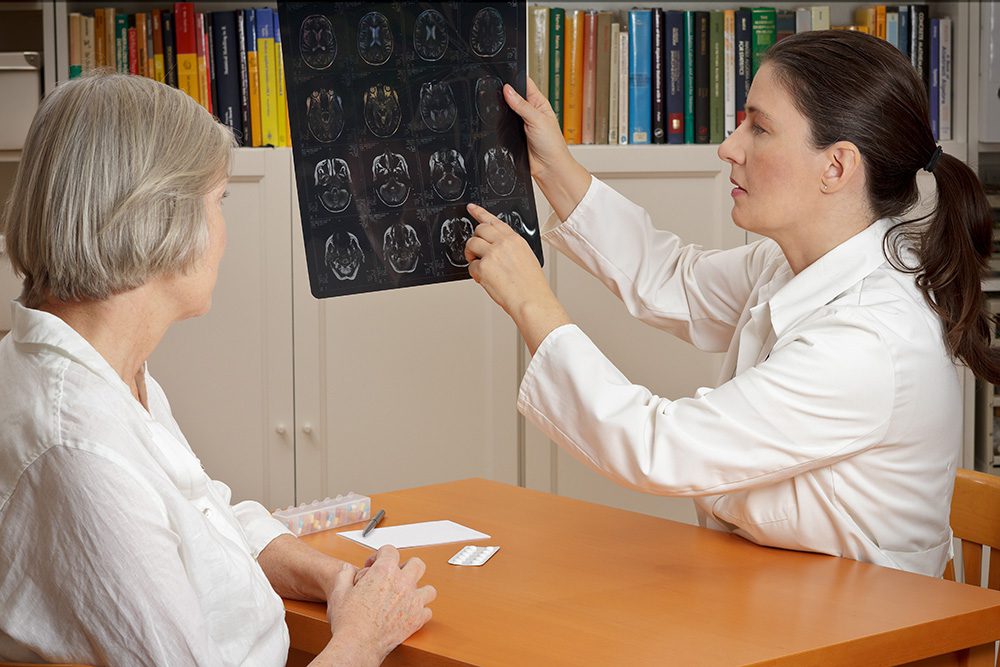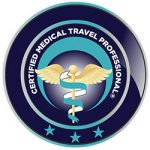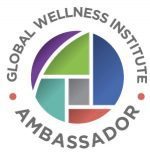Is it just brain fog or fatigue – or is it a stroke? Medical researcher and female health advocate, Dr. Emily Handley, investigates.
Women represent almost two thirds of all stroke victims, with stroke being the fifth leading cause of death in women aged 45-64 years and the second leading cause of death overall (The Australian Institute of Health and Welfare). Women also present with a range of unique warning symptoms and risk factors that further increase the impact stroke has on quality of life, including many mental symptoms that are harder to identify. Yet stroke is largely a preventable disease, and knowing the risks and symptoms of stroke specific to women can save lives.
What is stroke?
A stroke occurs after a blood vessel in the brain is ruptured and bleeds, or is blocked. The loss of blood flow and vital nutrients leads to that specific part of the brain dying, affecting a number of functions. Cells in the brain generally die after the beginning of stroke – yet some survive for hours, and if blood supply can be returned these cells may recover. The longer the time between stroke and treatment, the more likely there will be damage in the affected brain region. The brain can be roughly divided into quarters: the right and left hemispheres; the cerebellum; and the brain stem. The outcomes of stroke depend on which parts of the brain are targeted during the attack, and how many cells survive the loss of blood flow.
Getting treatment in time is the key to minimising the impact stroke has on recovering these brain functions. Knowing the warning signs of stroke can be lifesaving.

Warning signs of stroke.
The symptoms of stroke shared between men and women include face drooping; slurred speech; arm weakness or pain; as well as trouble with vision and coordination. FAST is a mnemonic that can help identify the more general signs of stroke:
- F = facial weakness, including mouth drooping
- A = arm weakness; are they able to lift their arms?
- S = speech difficulty, including slurred speech.
- T = time; if noticing any of these signs, call 000 immediately.
Other shared signs of stroke include a combination of facial numbness; difficulty understanding speech; blurred or lost vision in one or both eyes; severe and abrupt headaches; and trouble swallowing. These signs can appear and last for a matter of moments, or they may linger for up to 24 hours before disappearing. Symptoms that appear and disappear within a day are considered a transient ischaemic attack (TIA), and also need to be urgently addressed.
What can cause stroke?
Many of the risk factors of stroke are linked to our lifestyle choices; so, the good news is that it is completely within your power to make changes to protect against stroke occurring. Some of these risk factors are:
- High cholesterol
- Alcoholism
- Smoking
- High blood pressure
- Obesity
- Lack of exercise
- Diabetes
- Low-nutrient diet
However, there are still those causes that are outside of our control; this includes age and genetic predisposition. Women in particular have unique risk factors that impact blood pressure: a primary cause of stroke.

Risk factors of stroke in women.
There are 6 primary risk factors that are specific to women in developing stroke:
Age
Generally, women live longer than men; this is normally considered a good thing, yet with age comes the increased risk of stroke occurring.
Atrial fibrillation
Atrial fibrillation (Afib) is an irregular heart rate, and can be brought on by obesity, hormonal variation, and thyroid abnormalities. In women, the symptoms of Afib include fatigue and weakness, along with chest pain, shortness of breath and palpitations (1). If you notice these symptoms, let your general practitioner (GP) know so that you can treat this risk factor before it leads to stroke.
High blood pressure
The leading cause of stroke is high blood pressure. Women face a higher risk of developing high blood pressure after menopause, and can present without noticeable symptoms. High blood pressure causes strains to blood vessels, making them liable to rupture and initiate stroke. The best way to check for high blood pressure is to maintain regular visits to your GP to understand your normal blood pressure levels.
Stress
The greater the anxiety level, the higher the risk of having a stroke. Stress and anxiety causes the heart to work harder, in turn increasing blood pressure levels, and sugar and fat levels in the blood. Women are twice as likely to develop anxiety during their lifetime as they try to juggle work, childcare, social life and health. Symptoms specific to women can include stomach pain; increased heart rate; lethargy; focus difficulties; insomnia; and a sense of impending danger or panic. Research has shown that women who score in the highest third of anxiety symptoms have a 33% increased risk of stroke. If you feel your stress or anxiety is unmanageable, it is important to see your doctor to get a referral to a trained mental health professional.
Pregnancy
Pregnancy can strain the heart and blood vessels, with increased body weight and changing hormones to blame. Over 10% of women with normal blood pressure before pregnancy will develop high blood pressure during pregnancy, increasing the risk of stroke. Preeclampsia is a more severe version of high blood pressure that occurs during pregnancy, and causes headaches, swelling in the face and hands, blurred vision, and increases the risk of premature delivery. Women who’ve experienced preeclampsia have a much higher risk of stroke later in life; and even during pregnancy if left unchecked.
Hormonal medicines
For women who have one or two risk factors already – such as obesity, smoking or high blood pressure – birth control pills can heighten the risk of stroke. This is also the case with hormone replacement therapy; hormone replacement therapy in women during and after menopause can increase blood pressure and the risk of blood clots, in turn increasing the risk of stroke. Before beginning any hormonal medications, establish with your GP that you are not already at risk of developing blood clots or high blood pressure to avoid increasing stroke risk.
Migraines
Finally, migraines – specifically, those that include an aura – are associated with stroke in younger women. High levels of the female hormone estrogen increase the risk of migraine with aura, in turn increasing the risk of stroke. Migraine with aura is also associated with increased risk of blood clots, causing stroke.
The interplay of risk factors that uniquely affect women in the likelihood of stroke makes it difficult to tease out causes to target. The best prevention, as always, is to maintain regular appointments with health professionals. For stroke in particular, it is critical to keep an eye on blood pressure levels and be aware of the risks that come with increased estrogen levels during pregnancy and as caused by medications.

What are the warning signs of stroke for women?
Women have additional subtle signs of stroke that can be easily dismissed – knowing and identifying these is critical for getting time-sensitive, life-saving treatments. The unique symptoms include nausea and vomiting; hiccups; breathing trouble; feeling faint or general weakness; and even seizures. As these are not associated with general stroke symptoms, it can be difficult to connect them immediately to stroke and may delay treatment if not recognised.
As well as physical symptoms, altered mental status can also indicate stroke in women. The sudden onset of unresponsiveness; disorientation; hallucinations; and agitation can presage stroke and are the most commonly reported symptom in women. Though doctors still often term these as non-traditional symptoms, this view is now thought to be dated. These warning signs are clear and consistent indicators of stroke in women, and knowing what they are is key to advocating for timely treatment.
Treating stroke in women.
Alarmingly, studies have shown that women receive poorer treatment when presenting at emergency than men with stroke; typically, women wait longer to be seen after arrival and are less likely to be considered as having a ‘serious’ issue. Once women are finally admitted to care, they often receive less intensive therapeutic workshops and post-stroke care. Yet there are many stroke therapies that are particularly beneficial for women, and the addition of these in any immediate treatment has huge benefits.
For most strokes – generally ischemic strokes – the primary treatment is a drug called tissue plasminogen activator (tPA), that acts to bust blood clots. Importantly for women, tPA has a greater effect in women than men, providing robust positive results. It is vital that tPA be given within a 3–4-hour time-frame from the beginning of stroke, and the sooner the better. However, make sure to be tested for which specific type of stroke you are experiencing; for haemorrhagic stroke, tPA can worsen your condition. If the critical time frame has passed, blood thinning medications can be used to improve blood flow. For those with a history of atrial fibrillation or of stroke, this may become long term.
Cortical stimulation in women has also shown to be more effective when compared to men, with longer lasting benefits. This intervention involves using electrical waves delivered externally to the brain and is thought to help surviving brain cells maintain connections by interacting with female hormones.
Haemorrhagic strokes have fewer treatment options and are much more dangerous to the sufferer. The treatment hinges upon controlling bleeding, and reducing pressure in the brain with medications or surgery. Another method to halt the bleeding of ruptured blood vessels is to use a surgical metal clip to close the blood vessel. This involves opening the skull; however, endovascular coiling is a similar procedure that does not involve such an invasive step. Instead, a long catheter is inserted through a small cut in an artery in the body. This is moved to the point of rupture, where it releases small metal coils to stop the bleeding and help form a healing clot. A similar procedure is used for abnormally shaped blood vessels, inserting a catheter at the groin to enter blood vessels, stop bleeding and block abnormal connections.
Recovering from stroke.
Recovery post-stroke begins in the hospital, focusing on immediate recovery and regaining basic functions. After this, the patient is either moved to a specific rehab centre, or – depending on condition – they can continue rehabilitation and care at home. Once at home, care can be supplemented with outpatient therapies, such as physiotherapists, speech pathologists and occupational therapists.
Importantly, studies have shown that women who do survive stroke generally recover more slowly than men. As well as taking longer to recover, women are more likely to experience many stroke-related impairments after the event. This includes depression; fatigue; and mental impairment. Finding the right post-stroke care plan for the individual is vital for ensuring the best health outcomes. Rehabilitation services can be offered through a range of outpatient services. The type of facility that a person has access to however is often determined by location; insurance; and financial means. A doctor can help find the best setting, though it is beneficial to seek the help of an occupational therapist, mental health professional and other allied health professionals.
The overall goal of rehabilitation is to improve speech, motor, sensory and cognitive skills to empower the person to be independent. The success of recovery is dependent on how much damage is present; how soon recovery begins; age; and whether any other medical problems are present.
Reducing stroke risk.
Generally, the same lifestyle steps taken to improve cardiovascular health will reduce the risk of stroke: taking part in regular exercise, eating a healthy diet and avoiding smoking and alcohol.
A low fat, high-fibre diet that includes a range of fresh fruit, vegetables and whole grains is recommended. Also limit salt intake to no more than 1 teaspoon (6 grams) a day; too much salt increases blood pressure. Combining this with regular exercise is vital for maintaining a healthy weight, and can also lower blood pressure and cholesterol levels. The recommended amount of exercise is 150 minutes per week, and can consist of walking, cycling and gardening, or higher intensity activities such as team sports and running. After stroke recovery, it’s important to try maintain exercise in accordance with a rehabilitation plan.
Quitting smoking greatly decreases your chances of stroke. Cigarettes narrow your arteries, making blood more likely to clot. Excessive alcohol consumption also increases stroke risk by more than 3-fold, and can lead to atrial fibrillation, high blood pressure and weight gain.
Finally, it is crucial for women to evaluate blood pressure levels during periods of hormone fluctuation, such as pregnancy and menopausal transition. Untreated high blood pressure is the single greatest risk factor of stroke and is impacted by hormones; regularly assessing your blood pressure will increase the likelihood of detecting abnormalities and taking preventative action against stroke.
Where and when should you seek help or advice?
Stroke can lead to long-term disability and can have debilitating effects on quality of life. Women in particular face barriers to treatment, rehabilitation and diagnoses due to the specific symptoms they experience. Regulating blood pressure and maintaining an awareness of signs of stroke in women can be life-saving.
If presenting with any of the key signs of stroke – particularly those unique to women – seek emergency medical care immediately. Time is of the essence for stroke interventions, and the sooner these are implemented, the more likely the outcomes will be positive. Not all doctors are aware of the stroke symptoms women experience, and having knowledge of these will better enable you to advocate for treatment. If you think that you may be at risk for stroke development, see your GP as soon as possible to create management plan.
Other than working with your GP, there are a range of organisations that are excellent resources for finding information and creating connections with healthcare professionals.
The Stroke Foundation has comprehensive support and resources available for both stroke sufferers and career.
Health Direct is another Australian resource that has key facts regarding stroke and other links for more specific resources.
The Australian Stroke Alliance is a life-saving organisation that works to deliver urgent and lifesaving care to Indigenous communities and those in rural and remote areas across across Australia.
Disclaimer: This article provides general information only, and does not constitute health or medical advice. If you have any concerns regarding your health, seek immediate medical attention.








